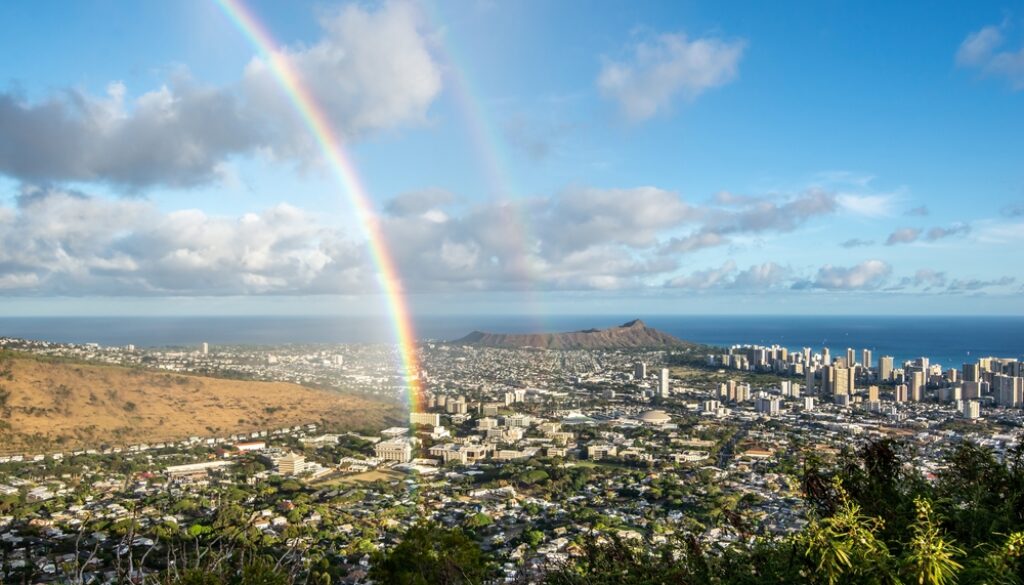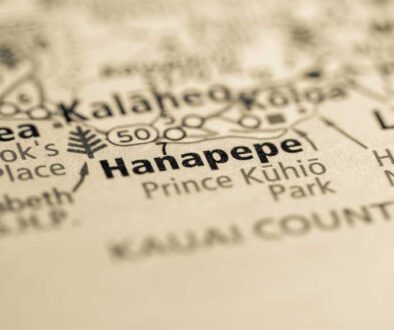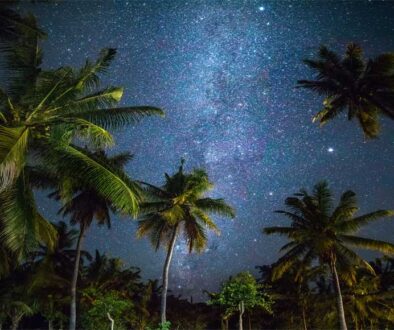What’s the Weather in Hawaii Really Like?
Hawaii has been a part of my life for longer than I can remember. I’ve considered it “home” for almost 30 years. Over the years, people ask me what Hawaii’s weather is really like. My dad always described weather in Hawaii as a warm, eternal spring. Although there can be anomalies, that’s still a perfect description of weather in Hawaii.
The Weather in Hawaii is a Warm, Eternal Spring
Hawaii’s Climate
Fun fact – Hawaii contains 10 of the 14 climate zones! Definitely a gardener’s paradise. Temperatures in Hawaii usually only fluctuate a few degrees in each direction from a median daily high of 82°, and a median low of 70°. The warmest months are May – October, and the “coolest” months are typically November – April. Balmy trade winds blowing from the north keep temperatures from getting too uncomfortable, but every now and then the trades stop. Instead, hot winds blow from the south, known as Kona winds. Occasionally, they cause a phenomenon knows as vog, which is volcano particles causing a type of smog.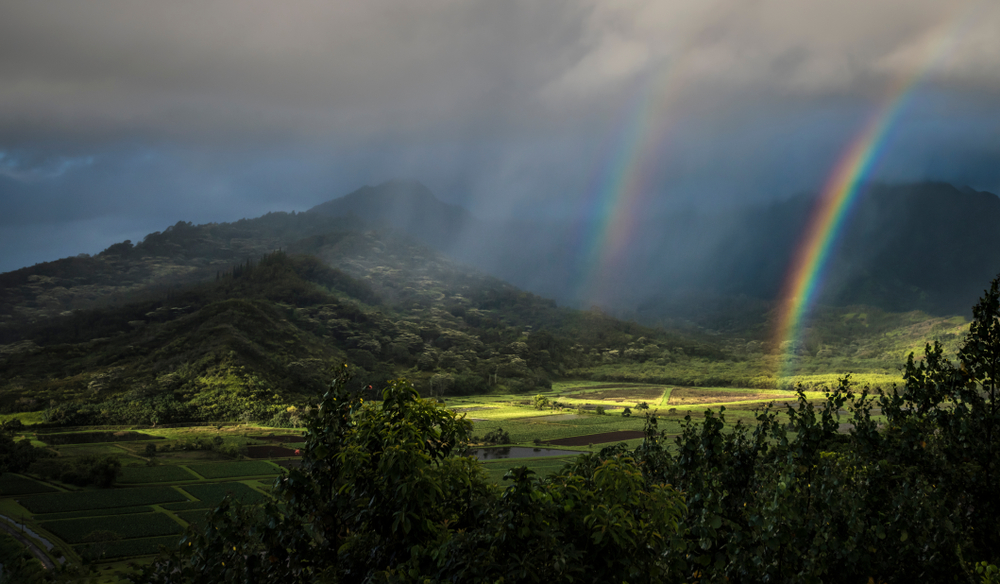
Despite the warm weather, temperatures can get a bit chilly in certain parts of the islands. For example, if you’re watching the sun rise on Haleakala, or stargazing on Mauna Kea you will probably want a sweater or windbreaker. In fact, sometimes Mauna Kea even receives snow! From surfboard to snowboard, all in one day. Conversely, the arid volcano region of the Big Island or Kauai’s Waimea Canyon can get a lot warmer than Oahu’s balmy windward side. Bottom line: expect warm, tropical climate unless you plan to be at a high elevation, and in that case, bring a light jacket.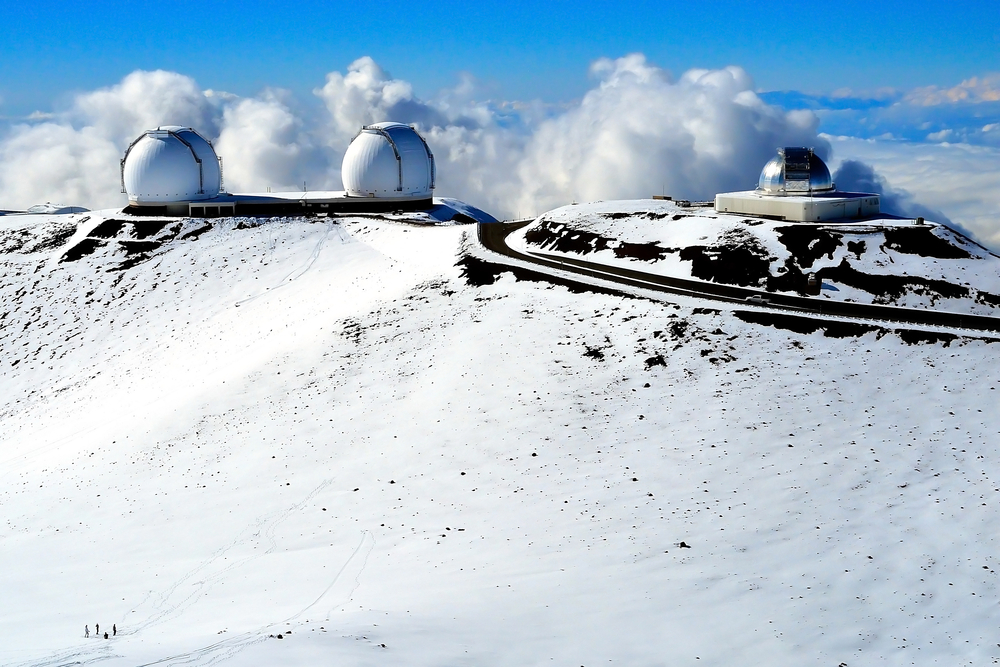
Is the Weather in Hawaii Rainy?
Clients often ask – is there a rainy season? Statistically, there is more rain in the warm winter months of mid-December to mid-April. Even then, rain usually comes during the night hours when you’ll be asleep. Additionally, the rain is usually on the windward sides of the islands and in the mountain rain forests. The majority of hotels and resorts we offer are mostly situated on the leeward (dry) sides of the islands.
You see, clouds move in from the ocean on the windward side, and drop rain on the mountains. This leaves the leeward side bright and sunny. For instance, when you’re on sunny Waikiki Beach you can view large clouds over the mountains (rainforests). Those clouds and rainfall are watering the lush greenery and waterfalls you will be enjoying when you explore windward Oahu. That’s how we get our awesome rainforest waterfalls!
What About Tropical Systems?
Some ask about Hawaii’s hurricane season. In our four decades of personal experience with Hawaii, we have seen a few watches and warnings of tropical storms and hurricanes, but only one major hurricane. This was Hurricane Iniki, in 1992, and mainly impacted Kauai. Not to say Hawaii hasn’t felt the effects of tropical storms, but when compared with the tropical activity the Caribbean consistently experiences, it pales in comparison.
A big factor for Hawaii’s relative low tropical activity is because as storms move through the Pacific, the water between the Mainland and Hawaii is cooler. This weakens most tropical systems. In addition, Hawaii is minuscule in the grand scheme of the Pacific Ocean. Most storms pass to the south or north. It seems that God’s design for Hawaii’s location in the Pacific was almost perfect. Of course, no one knows the final outcome of storm watches and warnings, but we have experienced more than four decades of them mostly bypassing our beautiful Islands.
To sum it up, the weather in Hawaii is ideal, and almost always beautiful year-round, year-after-year. Hawaii truly is God’s gift to planet Earth. Come see for yourself.


